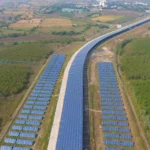In a landmark two-day visit, Indian Prime Minister Narendra Modi and Japanese Prime Minister Shigeru Ishiba unveiled a sweeping agenda aimed at deepening their “Special Strategic and Global Partnership.” The summit produced a raft of agreements, declarations, and initiatives that set the tone for an ambitious decade of collaboration.
Historic Agreements and Strategic Vision
-
A Joint Vision for the Next Decade
India and Japan adopted the India-Japan Joint Vision for the Next Decade, encompassing eight strategic pillars: economic partnership, economic security, mobility, ecological sustainability, technology and innovation, health, people-to-people ties, and state-prefecture cooperation framed under an Indo-Pacific vision of a free, open, peaceful, and prosperous region. -
Twelve Strategic Pacts Signed
A total of 12 formal agreements were signed—including declarations on security cooperation, human resource exchange, digital partnership (Digital Partnership 2.0), clean hydrogen and ammonia, lunar exploration (Chandrayaan-5), environmental conservation, and cultural exchange—along with frameworks for wastewater management, minerals cooperation, and diplomatic training and research. -
Human Resource Exchange Initiative
India and Japan agreed on an Action Plan to facilitate the exchange of 500,000 individuals over the next five years, including 50,000 skilled and semi-skilled workers from India to Japan, addressing labor demands and enhancing people-to-people linkages. -
Private Sector Investment Commitment
Japanese private investment into India has been ramped up to a target of 10 trillion yen (~USD 68 billion) over the coming decade, signaling strengthened economic integration. -
Economic Security and Supply Chain Resilience
India and Japan launched an Economic Security Initiative to enhance supply chain resilience across critical technology sectors such as semiconductors, clean energy, telecoms, pharmaceuticals, and critical minerals. -
Space Collaboration: Chandrayaan-5 Mission
A pivotal highlight of the visit was the announcement of a joint Chandrayaan-5 lunar mission between ISRO and JAXA, aimed at exploring lunar water and ice deposits—a milestone in their scientific and space cooperation. -
Infrastructure and AI Cooperation
Additional initiatives include the India-Japan AI Initiative, focusing on large language models, capacity building, and start-up support, and the Next-Gen Mobility Partnership promoting collaboration in railways, aviation, roads, shipping, and ports, with a strong “Make in India, make for the world” ethos. -
Support for SMEs and Sustainable Fuel Technologies
The launch of the India-Japan SME Forum aims to galvanize collaboration between small and medium-sized enterprises, while the Sustainable Fuel Initiative will advance R&D and energy security via biogas and biofuels. -
Sub-National and Cultural Engagements
Strengthened state-prefecture partnerships were announced, with three reciprocal visits annually, along with new regional forums involving Kansai and Kyushu to drive business, cultural, and people-to-people exchanges.
Significance and Takeaways
This summit marked a leap in India-Japan relations, embedding strategic alignment across defense, economy, technology, mobility, and cultural diplomacy. Prime Minister Modi hailed the cooperation as ushering in a “golden chapter” rooted in shared democratic values and innovation.
With over a dozen pacts and initiatives, the visit cemented the blueprint for a resilient, people-centric, and forward-looking partnership—poised to reshape the future landscape of bilateral collaboration between the two nations.












